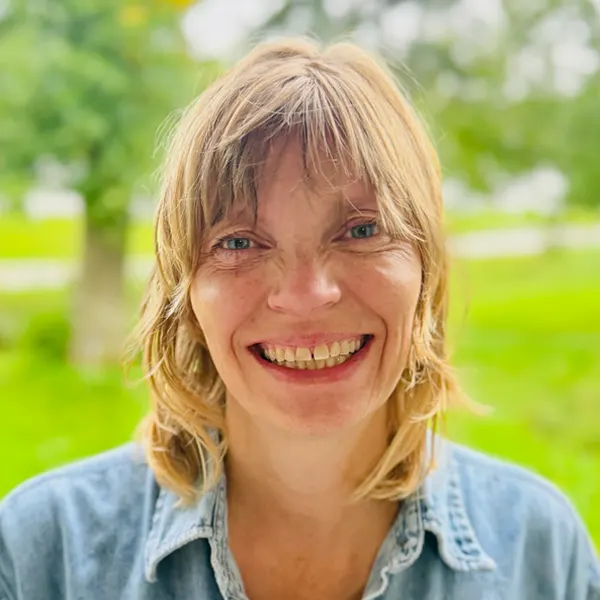Big polluting corporations that make a lot of money from the current energy system are trying to stay in control by offering new technologies they claim will help reduce pollution. But many of these promises are, at best, unproven and ineffective, and, at worst, continue to harm our communities and the environment.
At CURE, we are fighting against these schemes—fake solutions—that continue to inflict harm on low-income communities, rural areas, and Indigenous, Black, and other communities of color. We are also building a movement to ensure that decisions about energy, farming, and the economy are made with the health and safety of rural communities in mind. The voices of these communities need to be heard and have a say in how things are done.
No False Solution Resources
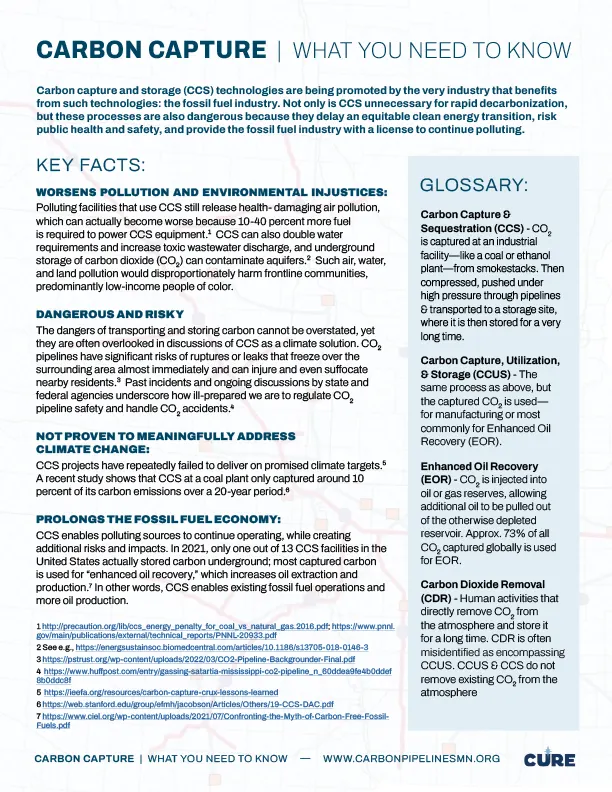
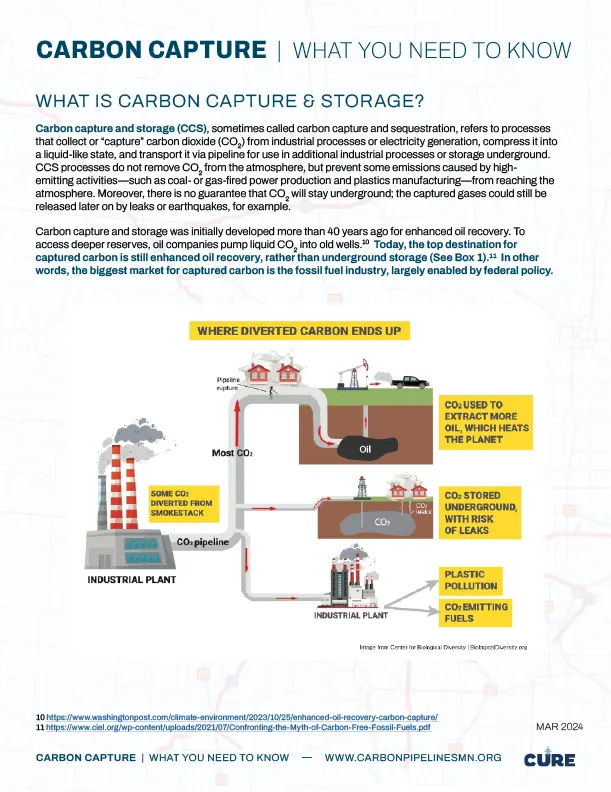
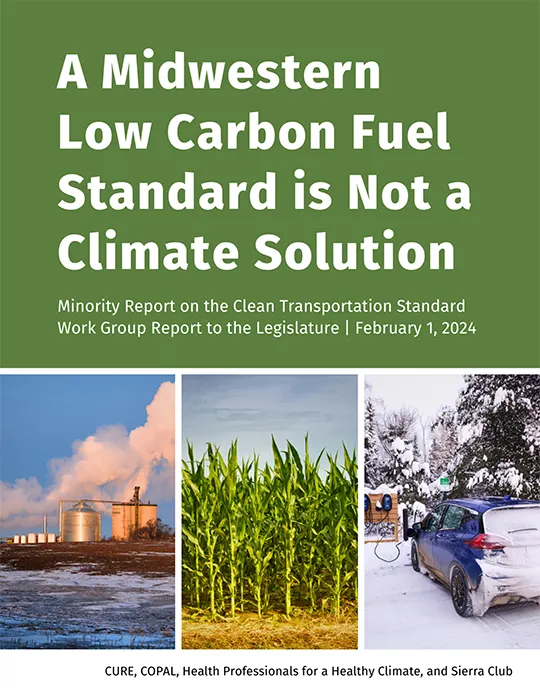
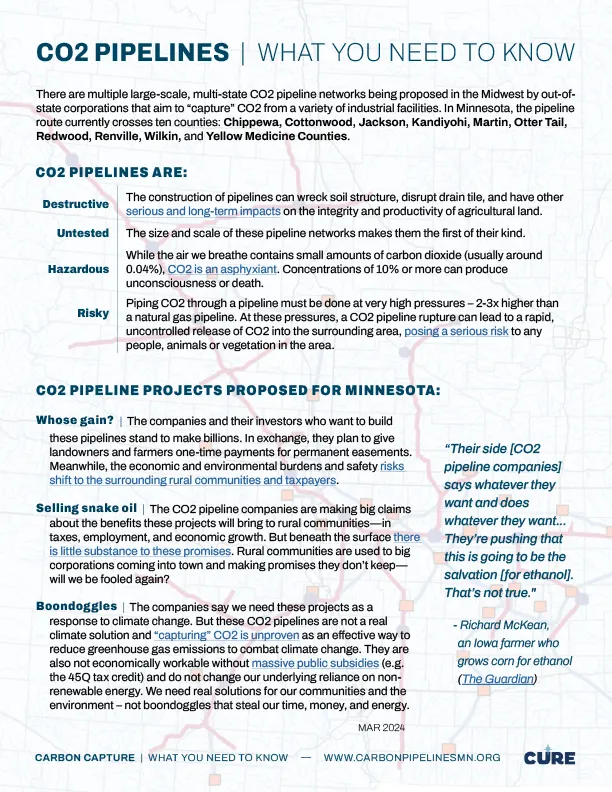
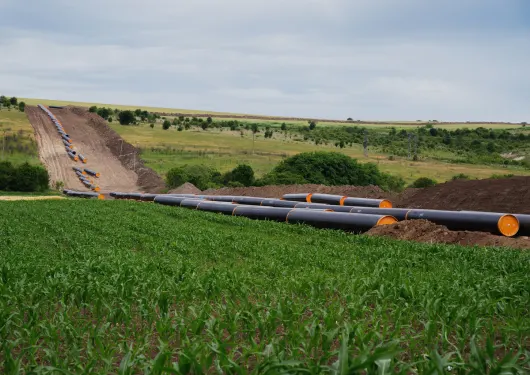
No CO2 Pipelines
We oppose the development of over 2,000 miles of Carbon Capture Utilization and Storage (CCUS) pipelines across the Midwest. This buildout sustains polluting industries and funnels tax dollars to billionaires and mega-corporations. CCUS has been ineffective at capturing and storing CO2 long-term, and captured CO2 is often used for Enhanced Oil Recovery (EOR), promoting fossil fuel extraction. Rural communities have better ways to engage in a clean energy economy that meet the needs of our communities and our environment.
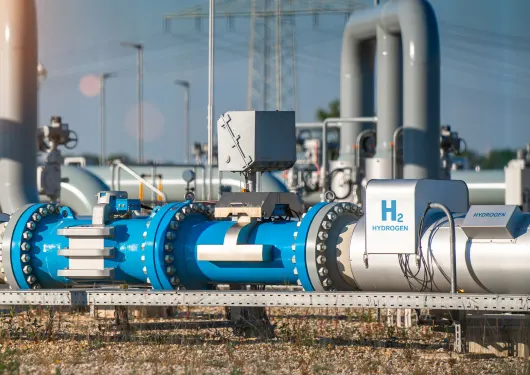
Hydrogen
Right now, nearly all hydrogen energy (99%) is produced using fossil fuels. Only 1% is “Green Hydrogen,” made through a process that uses renewable energy, like wind and solar, to split water. CURE does not promote hydrogen energy. We believe that investing in any energy that keeps us using fossil fuels distracts from real clean energy solutions. While Green Hydrogen might be useful in hard-to-electrify sectors, producing it with wind and solar power competes with the urgent need to expand renewable energy access. Using hydrogen is also less efficient than using solar and wind energy directly. Our focus should be on investing in renewable energy sources. CURE agrees with our partners who are worried about recent investments in Hydrogen.
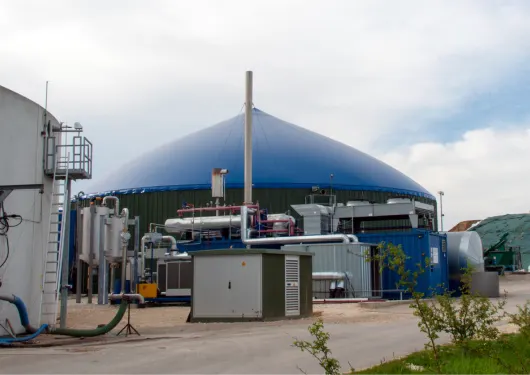
Methane & Biodigesters
Fossil fuels and Big Ag usually don’t get along but have found common ground in their support of Renewable Natural Gas (RNG). RNG is also called “Factory Farm Gas,” biomethane, or captured methane —which is neither renewable nor clean. It’s made from waste methane from landfills, sewage plants, and animal manure from big farms. However, when burned, it pollutes just like regular fossil gas. RNG uses the same pipes and systems as fossil gas, which means we keep using and expanding these systems instead of moving to cleaner energy. Supporting RNG at big farms makes these farms grow bigger, which can harm nearby communities and the environment. It also uses public money that could be spent on better energy solutions for rural areas.
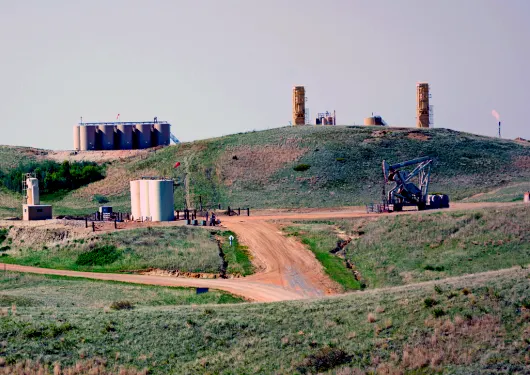
Carbon Capture & Sequestration
Carbon Capture Utilization and Storage (CCUS) and its related infrastructure—CO2 pipelines — are examples of what a clean energy transition might look like if we let big polluting industries and profit-seeking corporations call the shots. These false climate solutions often generate huge profits for corporations and executives but leave communities and the environment worse off. CURE is fighting against this by speaking up in places where decisions about energy, farming, and the environment are made. We aim to stop big corporations and industries from dominating these decisions and ensure that people who are affected can have their voices heard. CURE empowers people in rural areas to learn how to stand up for their rights and interests.
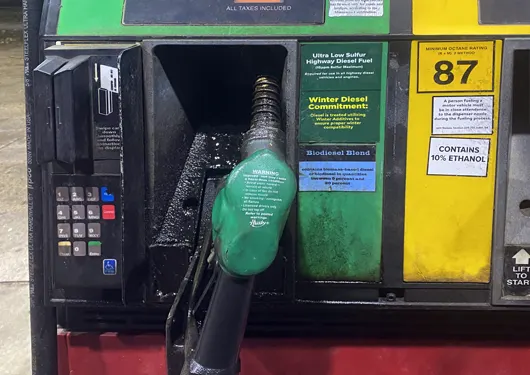
Low Carbon Fuel Standard
CURE is deeply committed to a just transition of the transportation sector. This includes reducing vehicle miles travelled, increasing access to and use of public transit options, and electrifying as many forms of transportation as possible. A Low Carbon Fuel Standard (LCFS), however, further entrenches and incentivizes biofuels, which cause significant environmental and human health impacts, including nitrate pollution, air pollution, and soil degradation. For a comprehensive review of the potential pitfalls of an LCFS, please read the Minority Report published by CURE and other partners in response to the State’s Clean Transportation Standard Working Group.

